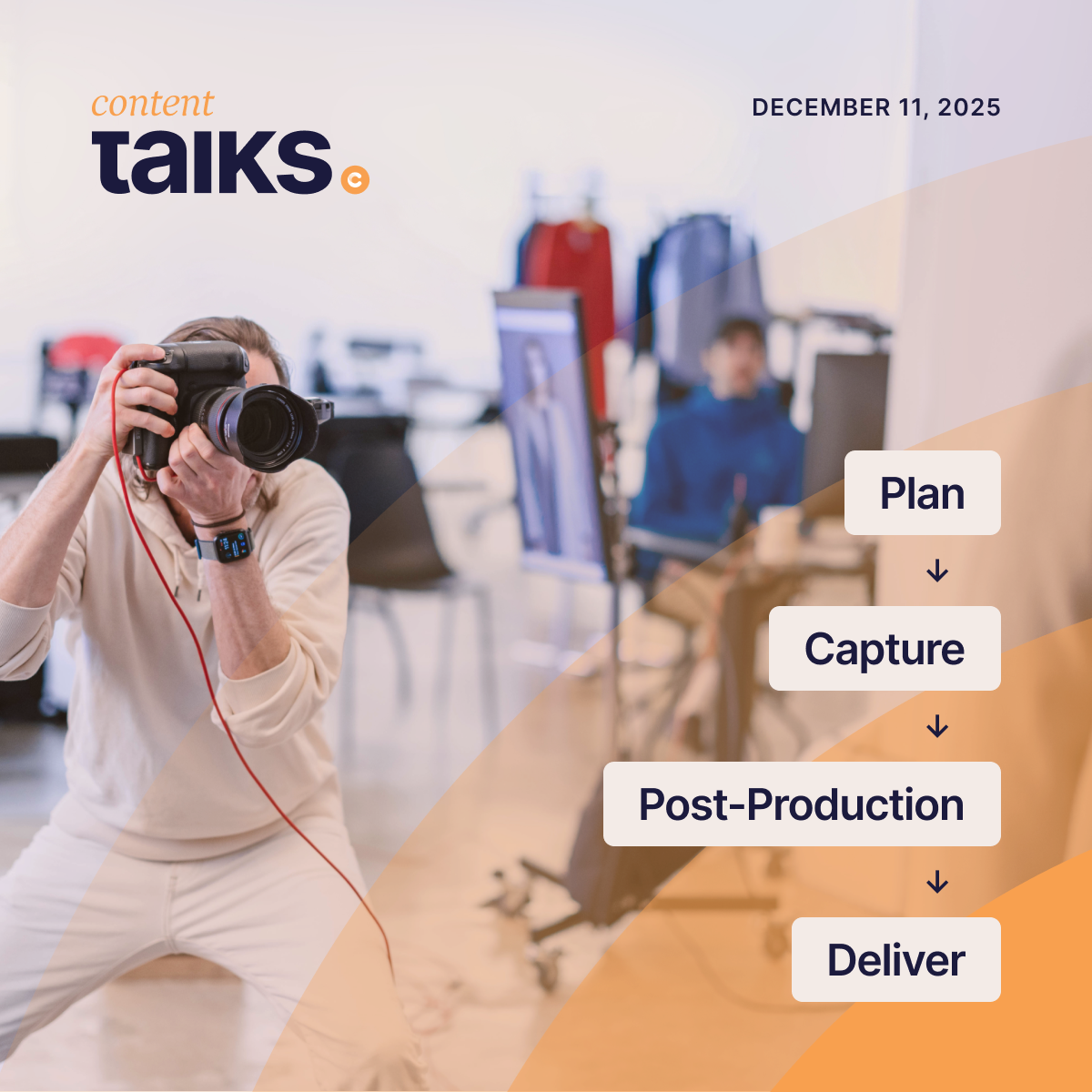5 Time Management Strategies for eCommerce Photo Studios
Every second in an eCommerce photo studio can translate into money saved or money spent; time management is crucial. Ensuring that your eCommerce photo studio runs smoothly and efficiently requires strategic planning and keen time management.
Today, we'll explore the topic and offer five effective strategies for managing time in a content or photo studio.
What is Time Management and Why is it Important in a Studio?
Simply put, time management is the process of planning and controlling how much time to spend on specific activities. It involves techniques, tools, and skills that help individuals or teams make things faster and cheaper, without sacrificing the quality of the work. In a photo studio, effective time management can be a game-changer. With multiple sets, products, and talents to coordinate, solid time management strategies can make operations run more smoothly and productively.
The Importance of Time Management and Planning in Studios
Planning and time management in studios directly impact productivity and efficiency. With effective strategies in place, teams can work cohesively, reducing the chance of delays, confusion, or oversights. Furthermore, it promotes an organized, stress-free work environment that can boost overall morale and productivity.
Five Key Strategies for Time Management in Photo Studios
- Set Dates and Times: Be clear about when shoots are happening, and ensure all involved parties are aware of these schedules. Punctuality on tight timelines is important and clear communication of schedules can prevent unnecessary delays and confusion. If possible, keep this information in a single location that is accessible to all. The more locations this information is kept, the more chances for miscommunication.
- Book Sets: Plan ahead and reserve the necessary sets for each shoot. This will prevent clashes and last-minute rushes. Be sure to also consider the time required for set-up and teardown.
- Assign a Producer: A dedicated producer can quickly become the backbone of a shoot, overseeing everything from managing schedules to ensuring everything runs smoothly. They can also tackle any unforeseen issues, ensuring minimal disruption to the shoot.
- Assign Products and Production Tasks: Allocate specific products to each shoot and assign related tasks to individuals or teams. This helps to clearly define what needs to be done and by whom, avoiding confusion and wasted time. Thorough style guides can assist in this process.
- Automate, Automate, Automate: In time management, the less your team has to manually take care of the better. When we asked Photo Studio Manager Dan Urbano what he thought about the subject he told us, “For me, time management in the studio is about automation. The more you can automate, the more you can get done. For example, from a photographer's perspective, a lot of time is spent on setup and administration (tagging, renaming, etc.). The more they can automate and cut out from the time between actually shooting and/or processing images, the more productive their studio can be.” We couldn’t agree more.
Boosting Productivity With Efficient Planning and Production Calendars
As we’ve seen above, there are a lot of ways to boost productivity in the studio, but production calendars can be a game changer. These calendars serve as essential tools for organizing and scheduling various tasks, ensuring that every step of the production process is properly accounted for and executed in a timely manner.
By incorporating a production calendar, photo studios can streamline their operations, optimize resource allocation, and minimize potential bottlenecks or conflicts. The calendar provides a comprehensive overview of upcoming shoots, appointments, deadlines, and other important events, enabling studio managers and team members to effectively allocate resources, plan their workflow, and set realistic expectations.
Additionally, production calendars facilitate better communication and coordination among team members, as everyone can access and contribute to the centralized calendar, ensuring that everyone is on the same page and working towards common goals. Overall, the utilization of production calendars in photo studios serves as a valuable tool for efficient planning, ultimately leading to increased productivity, improved time management, and enhanced overall performance.
On episode 109 of The E-Commerce Content Creation Podcast, the Director of Photo Studio at Patagonia, Scott Wilson, told Daniel, “We have the eComm photography which makes up let’s say 70% of the volume of our work, and that has to stay on a schedule. You can’t have bombs dropping every couple of weeks with a new project stopping the eComm train and then having everyone move over to this other kind of cool creative project. Say 20 to 30% of the projects are more creative, we still get direction from a designer, but it allows our creative directors and stylists a little bit more flexibility in what we do. We do have guard rails, we don’t reinvent the wheel creatively with photography in the studio, because Patagonia has a style and we stick within that, but there is freedom within there to do some pretty cool innovative things.”
So as much as things are planned out and scheduled out, remember that there’s also room for a bit of flexibility to let the creativity shine.
The Creative Force Planning Module
We’ve mentioned this in a few other places throughout the Photo Studio Manager Playbook, but again, it makes sense here. We will be launching the Creative Force Planning Module soon and believe it’s going to be an incredible addition to eCommerce photo studios everywhere. This innovative tool will offer comprehensive solutions to streamline studio operations, from time management to task allocation and of course, planning. Keep an eye out for the release.
Wrap Up
Efficient time management and strategic planning are essential to successful eCommerce photo studios. By implementing these five strategies — setting dates and times, booking sets, assigning a producer, building on-set teams, assigning products and tasks, and identifying overlaps with alerts — you can boost productivity and ensure smoother operations. The Creative Force Planning Module, with its focus on automation, could soon become an integral part of your planning process, further optimizing your studio's operations.
But these strategies are just the start. Continual learning, adaptation, and training are integral to staying on top of the industry's dynamics and ensuring your studio is always at its most productive. At the end of the day, having the right tools is crucial. Worksheets, digital tools, software, and apps can all play significant roles in improving time management, offering convenient, streamlined solutions to help keep your studio organized and efficient.
We hope these tips provide valuable insight for your eCommerce photo studio, and we encourage you to sign up for our upcoming Studio Manager Playbook to delve deeper into these strategies. Keep an eye out for the Creative Force Planning Module, set to revolutionize the way you handle time management and planning in your photo studio.









